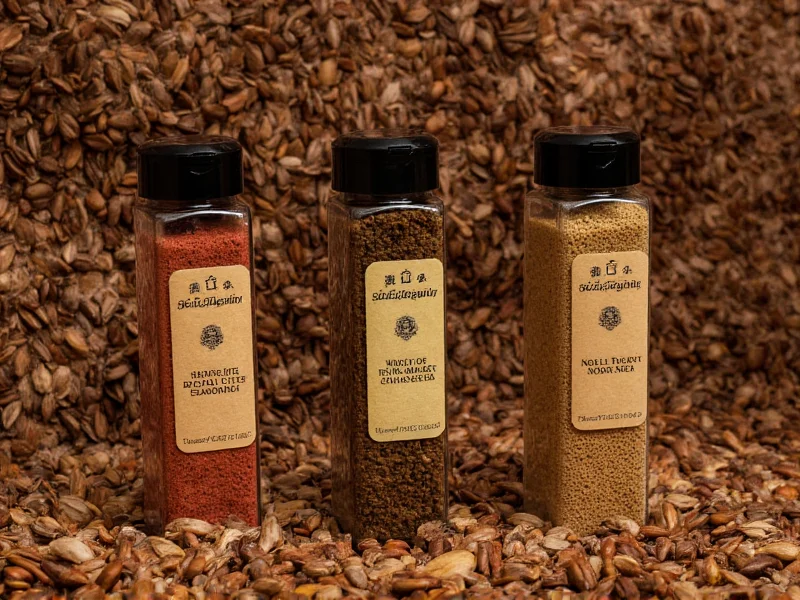Holy trinity seasoning has become a staple in modern pantries for good reason. This simple yet powerful blend delivers the essential aromatic base that forms the backbone of flavor in countless recipes. Understanding its components and applications can transform your everyday cooking from bland to brilliant.
Understanding the True Holy Trinity Seasoning Components
While culinary traditions sometimes use “holy trinity” to describe different ingredient combinations, authentic holy trinity seasoning specifically refers to the dry spice trio of garlic powder, onion powder, and celery seed. This precise 1:1:1 ratio creates a harmonious flavor profile that serves as a foundational element in seasoning.
| Component | Flavor Profile | Primary Culinary Function |
|---|---|---|
| Garlic Powder | Pungent, savory, slightly sweet | Provides deep umami foundation |
| Onion Powder | Sharp, sweet, aromatic | Builds complex savory notes |
| Celery Seed | Earthy, slightly bitter, herbal | Balances and rounds flavors |
Distinguishing From Other “Holy Trinity” Concepts
Many home cooks confuse holy trinity seasoning with the Cajun/Creole holy trinity, which refers to the aromatic vegetable base of chopped onions, celery, and bell peppers. The key difference lies in form and application: holy trinity seasoning is a dry spice blend, while the Cajun version consists of fresh vegetables sautéed as a cooking base.
Another common point of confusion involves creole seasoning, which typically includes additional ingredients like paprika, cayenne, and oregano. Holy trinity seasoning remains deliberately simple—just three ingredients—making it more versatile as a foundational element rather than a complete seasoning blend.
Practical Applications in Everyday Cooking
The beauty of holy trinity seasoning lies in its versatility across protein types and cooking methods. Unlike single-note seasonings, this blend provides complete aromatic coverage that enhances rather than overwhelms.
For poultry applications, rub 1-2 tablespoons per pound of chicken before roasting or grilling. The seasoning penetrates the skin, creating a flavorful crust while seasoning the meat beneath. When preparing ground meats for burgers or meatloaf, incorporate one tablespoon per pound directly into the mixture for evenly distributed flavor.
Vegetable roasting benefits tremendously from this blend—toss root vegetables with olive oil and one teaspoon per pound of vegetables before roasting. The seasoning caramelizes beautifully, creating complex flavor notes that elevate simple preparations.
Creating Homemade Holy Trinity Seasoning
Commercial blends sometimes include anti-caking agents or additional ingredients. Making your own holy trinity seasoning ensures purity and freshness while costing a fraction of store-bought versions.
Basic Homemade Recipe:
- 3 tablespoons garlic powder
- 3 tablespoons onion powder
- 3 tablespoons celery seed
Combine all ingredients in a small bowl, whisking thoroughly to ensure even distribution. Store in an airtight container away from light and heat. Properly stored, homemade holy trinity seasoning maintains peak flavor for 4-6 months, significantly longer than many commercial blends.
For enhanced flavor complexity, consider toasting the celery seeds in a dry skillet over medium-low heat for 2-3 minutes until fragrant before combining with the powders. This simple step intensifies the earthy notes without altering the fundamental flavor profile.
Storage and Shelf Life Considerations
Dry spice blends maintain quality through proper storage. Exposure to light, heat, and moisture rapidly degrades flavor compounds. For optimal shelf life:
- Store in opaque, airtight containers
- Keep away from stove heat and direct sunlight
- Avoid storing above 70°F (21°C)
- Never store in refrigerator (causes moisture absorption)
Signs your holy trinity seasoning has degraded include faded color, diminished aroma, or clumping. Freshly made blend should have a vibrant tan color and strong, pleasant aroma when opened.
Culinary Substitutions and Variations
When holy trinity seasoning isn't available, understanding substitution ratios prevents recipe failure. The most accurate substitute combines equal parts garlic powder, onion powder, and celery seed. In emergencies, a 3:1 ratio of onion powder to celery seed with added garlic salt (reducing additional salt in recipe) can approximate the flavor profile.
Chef-inspired variations include:
- Smoked Holy Trinity: Replace regular garlic powder with smoked garlic powder
- Herb-Enhanced: Add 1 teaspoon dried thyme per 1” cup blend
- Pepper-Forward: Incorporate 1 teaspoon white pepper per 1” cup blend
When modifying the base recipe, maintain the equal ratio of the three core components while adding supplementary ingredients in smaller quantities to preserve the essential character of the blend.
Recipe Integration Tips
Understanding when to apply holy trinity seasoning during cooking makes a significant difference in final flavor. For dry rubs, apply seasoning at least 30 minutes before cooking to allow flavors to penetrate. When using in soups or stews, add during the sauté phase with aromatics rather than at the end of cooking.
The seasoning works particularly well with slow-cooked dishes where flavors have time to meld. In pressure cooking applications, reduce the amount by 25% as the concentrated environment intensifies flavors.











 浙公网安备
33010002000092号
浙公网安备
33010002000092号 浙B2-20120091-4
浙B2-20120091-4